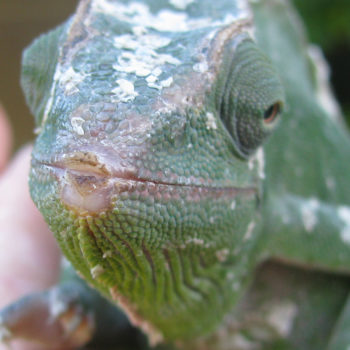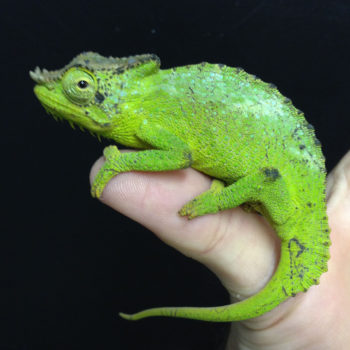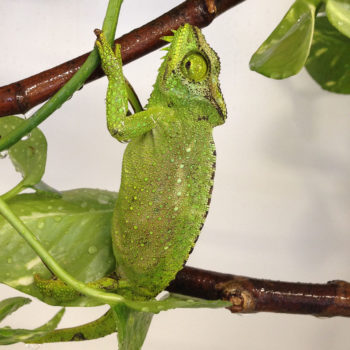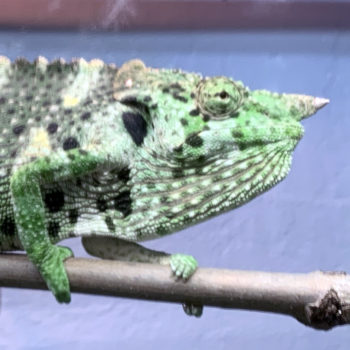Nose and Skin Rub
Description
The condition where the chameleon rubs its nose or skin raw is common in imports that are not well cared for before being shipped. The chameleon will relentlessly try to escape its enclosure or bag and will rub itself raw doing so. Nose rub is the chameleon trying to get out and rubbing his nose on the rough surfaces of the cage or bag until and beyond it being raw. This can be as serious as rubbing through the jaw bone.
Skin rubs all over the body are a result of rubbing against the shipping bag. These show up as black marks and, if an open wound was created, a scab may be present.
Symptoms
The tell tale symptom of a skin rub is a dark black patch on the sides, elbows/knees, dorsal crest, and especially the nose area.
Treatment
Since rub damage usually only happens in the importation process the wounds on the chameleon that arrives are often already scabbing or scarring. There is not much that is left to do unless there is an open wound. In this case, a veterinarian will be able to clean and treat the wound.














